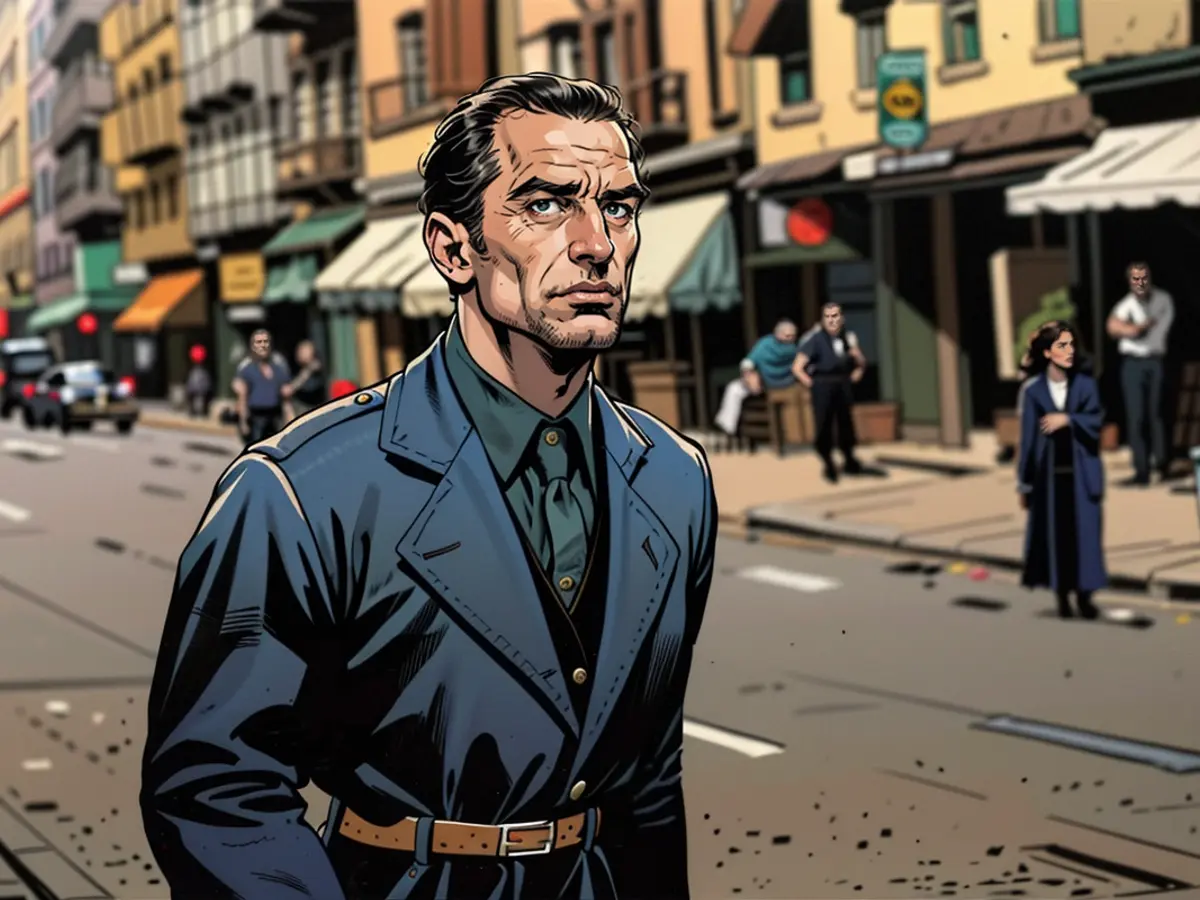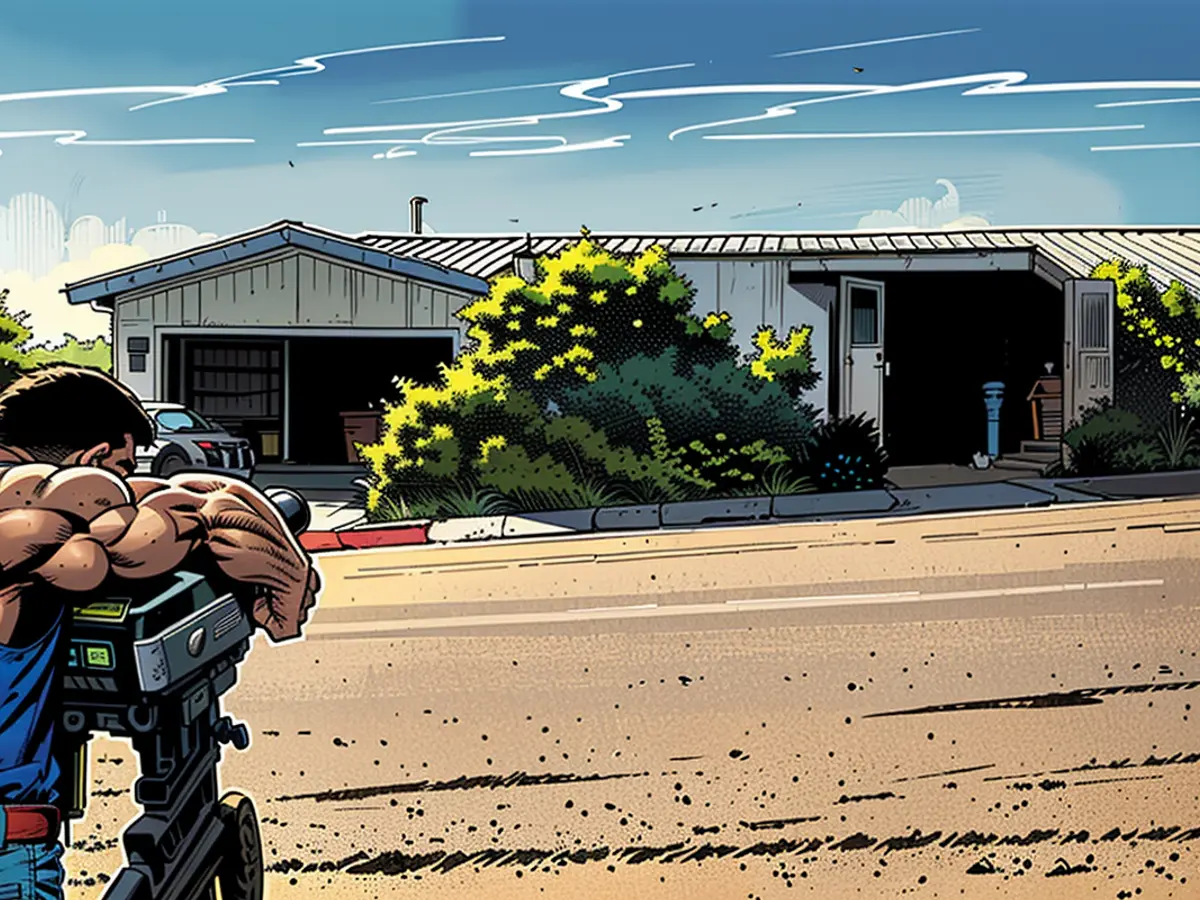Opinion: The problem with de-aging our megastars
Forty-five years later, De Niro starred as another outsider-turned gangster, playing Frank Sheeran in Martin Scorsese’s 2019 epic, “The Irishman.” The movie follows Sheeran’s progress for more than five decades from 1949 until 2000, when he’s seeing out his dotage in a nursing home.
As an actor already in his mid-70s, De Niro was ideally suited to play the older Sheeran. Unlike in “The Godfather II,” however, no up-and-comer was enlisted to play his younger counterpart. Thanks to de-aging technology, De Niro portrayed Sheeran throughout his life, the lines on his face digitally smoothed.

The movie garnered rave reviews and picked up 10 nominations at the 2020 Academy Awards. It also kicked into high gear a debate about de-aging that seems set to escalate with the hotly-anticipated release of “Here,” due to open on November 15.
“Here” features Tom Hanks and Robin Wright, who are 67 and 58 respectively, playing characters from their teens through to their 80s. The film’s director, Robert Zemeckis, has likened its visual style to that of silent movies. If “The Irishman” is anything to go by, I suspect Hanks’ and Wright’s digitally botoxed features will infuse it with a similarly jarring aura of unreality.
A quick bit of housekeeping before we proceed. There are a few ways to make actors appear younger on screen using technology, each with advantages and disadvantages. The de-aging technique in “The Irishman” uses light-based software called FLUX. It essentially deploys extra cameras and uses AI software to iron out an actor’s wrinkles, but doesn’t change the shape of their face too much.

In 2019’s “Gemini Man” however, the younger version of Will Smith’s character Henry Brogan has a fully CGI head, animated via motion capture a la Andy Serkis’s Gollum in The Lord of the Rings trilogy. Unlike the jowly “young” Sheeran, who looks nothing like De Niro in his prime, Brogan’s high cheekbones and slim jawline are reminiscent of a Fresh Prince-era Smith, albeit one who might have been lifted straight from a computer game. De Niro refused to act wearing a helmet and marker spots, and being De Niro, he got his way, hence the use of the FLUX technology.
Unfortunately, not everyone was convinced by the outcome. Director Quentin Tarantino said he acclimated to the de-aging pretty quickly when he saw “The Irishman” in the theater, but “noticed it more” when he watched it on TV. George Miller, who directed this year’s Mad Max prequel “Furiosa,” said he considered casting Charlize Theron again for the titular role and de-aging her, but decided after watching “The Irishman” and “Gemini Man” that it wouldn’t be “persuasive.”
A recurrent problem is that unless you use an entirely CGI face, which can be superimposed onto another actor’s body, you’re still restricted by the older actor’s physicality. There’s an excruciating bit in “The Irishman” when a supposedly young Sheeran kicks another character out of his shop. Sheeran’s meant to emanate vigor and intimidation, but he “chases” the guy like a wobbly senior, his movements stilted and ponderous.
There’s a similar issue in 2023’s “Indiana Jones and the Dial of Destiny.” Indy, played by a de-aged Harrison Ford (who was 80 when the film was released), is pursued by a train full of Nazis in a flashback scene. He dives and ducks out of the soldiers’ grasp, but though his face is youthful, the performance is lethargic compared to the whip-sharp Indy of yesteryear. Same thing in 2019’s “Captain Marvel,” when a de-aged Samuel L Jackson attempted to render a fighting fit mid-90s Nick Fury. Reflexes dull, joints creak, and no actor, no matter how skilled, can turn back time.
This, really, is why de-aging megastars always feels a bit icky. While it’s undoubtedly useful — and recasting household names comes with its own baggage — you get the sense that directors and producers are trying to capitalize on the nostalgia evoked by actors’ reincarnation, rather than attempt something new. In the “Here” trailer, Hanks’ character sports a haircut that could’ve been lifted straight from his 1988 hit “Big.” It’s manipulative, and appears to stem from the same anxiety that consistently sees Hollywood churn out remakes and sequels.
Get Our Free Weekly Newsletter
- Sign up for CNN Opinion’s newsletter
- Join us on Twitter and Facebook
Given the sheer amount of time and money filmmakers have poured into de-aging, it seems a real shame that their efforts can’t be redirected into promoting fresh talent instead. Timothée Chalamet played a young Casey Affleck in 2014’s “Interstellar,” Gwyneth Paltrow played a young Maggie Smith in 1991’s “Hook,” and Michael Cera played a young Sam Rockwell in 2002’s “Confessions of a Dangerous Mind.” Crucially, De Niro’s imitation of Brando, the greatest actor of his generation, set him on the path to becoming the greatest actor of his own.
The debate about de-aging in films is set to continue with the hotly-anticipated release of "Here", which features Tom Hanks and Robin Wright. Their digitally smoothed faces will portray characters from their teens through to their 80s, similar to De Niro's use of light-based software in "The Irishman".
The use of de-aging technology in films has sparked differing opinions, with directors like Quentin Tarantino and George Miller expressing reservations about its effectiveness and naturalness.







